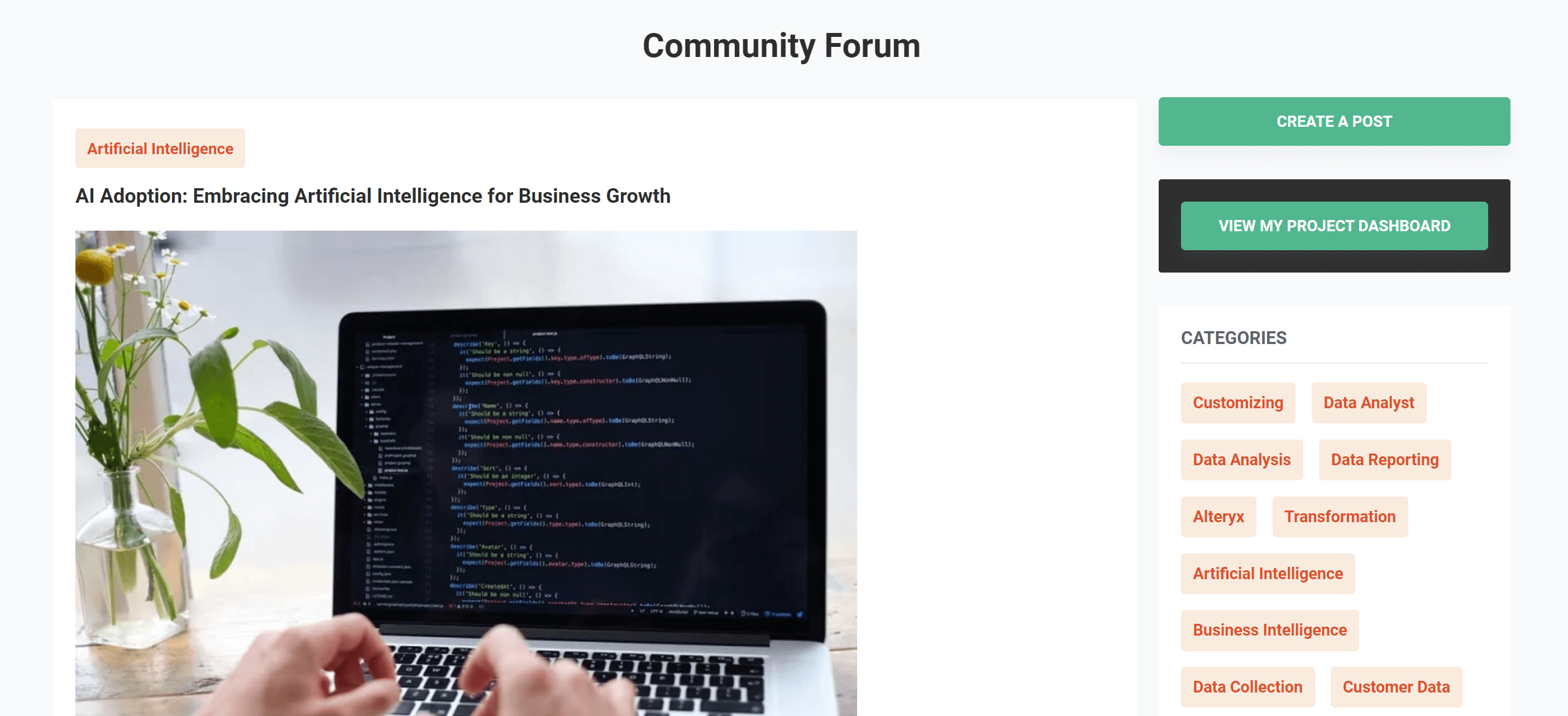Business Intelligence Best Practices – and What to Avoid

Table of content
What is Business Intelligence?
The Importance of Business Intelligence
Building a Business Intelligence Strategy
Challenges in Implementing a Business Intelligence Strategy
Conclusion
What is Business Intelligence ?
Business Intelligence (BI) is a technology-driven approach designed to analyze data and provide actionable insights that support informed decision-making across all levels of an organization. Through BI, businesses collect data from both internal IT systems and external sources, prepare it for analysis, and execute queries to generate insights. This process involves creating data visualizations, dashboards, and reports, which are then used by executives, managers, and staff for both operational decision-making and strategic planning.
The primary objective of BI initiatives is to enhance decision-making processes, thereby enabling organizations to boost revenue, streamline operations, and secure a competitive edge in the market. Achieving these goals involves utilizing a suite of analytics, data management, and reporting tools, combined with various methodologies for effective data management and analysis.
The Importance of Business Intelligence
Business Intelligence (BI) offers a myriad of benefits that can dramatically transform an organization’s strategy and decision-making process. Understanding the importance of Business Intelligence can unlock significant value across various facets of a business:
Customer Insight: One of the key advantages of BI is its ability to provide detailed insights into customer behavior, preferences, and trends. By leveraging BI tools, organizations can gain a comprehensive understanding of their customers, allowing them to tailor offerings and communication strategies more effectively. This proactive approach not only enhances customer satisfaction but also fosters long-term loyalty.
Operational Efficiency: Another critical benefit of Business Intelligence is its role in enhancing operational efficiency. BI enables companies to identify inefficiencies within their operations, whether in supply chain management or internal processes. With clear visibility into these areas, organizations can swiftly implement corrective measures, leading to optimized operations and substantial cost savings.
Competitive Advantage: A robust BI strategy is essential for gaining a competitive advantage. By utilizing BI to gather competitive intelligence, organizations can stay ahead of market trends and understand competitor actions. This insight sparks innovation and drives growth, helping businesses maintain a competitive edge in a rapidly evolving marketplace.
Predictive Analysis: The integration of predictive analytics and AI technologies into BI frameworks allows organizations to forecast future trends and scenarios accurately. This capability empowers businesses to strategize effectively and adapt to potential market shifts, positioning them to navigate changes proactively.
Profitability and Resilience: Finally, BI serves as a strategic asset that can significantly enhance profitability and resilience. When implemented effectively, Business Intelligence not only boosts competitiveness but also supports businesses in thriving amid dynamic market conditions. This resilience is crucial for long-term success and stability in an increasingly complex business environment.
Building a Business Intelligence Strategy
Crafting a successful Business Intelligence (BI) strategy is a meticulous process that requires a clear understanding of your organization’s goals and challenges. To create an effective BI strategy, consider the following essential steps:
Define Your Objectives
Start by clearly defining your BI objectives. Identify the specific business challenges you aim to address and determine the key metrics you need to monitor. Whether you’re looking to improve marketing ROI, refine customer segmentation, or enhance campaign performance, having well-defined goals is crucial for guiding your BI efforts.
Assess Your Data
Take a close look at your current data infrastructure. Determine what data you have, how it is collected and stored, and whether it meets your organization’s needs. Identify any gaps and decide what additional data needs to be gathered or which tools might be required to make better use of your data.
Streamline Data Extraction and Transformation
A solid BI strategy depends on efficient data extraction and transformation. Partnering with a sophisticated analytics platform like Improvado can facilitate smooth data extraction, transformation, and normalization. This integration helps bring together data from various sources—such as social media, advertising platforms, and CRM systems—into a unified and accessible format.
Focus on Data Visualization and Analysis
Effective data visualization is key to unlocking the full potential of your BI strategy. Use advanced BI tools like QlikView to build interactive dashboards and reports. These visual tools help you explore data, spot trends, and communicate insights clearly, enabling more informed decision-making across your organization.
Promote a Data-Driven Culture
For your BI strategy to truly succeed, foster a culture that values data-driven decision-making. Provide training on BI tools and emphasize the benefits of making decisions based on data. Building a data-centric culture will ensure that your team fully leverages the insights provided by your BI efforts.
Implement Self-Service Analytics
Give your teams the tools they need to perform self-service analytics. Access to user-friendly BI software allows individuals to explore and analyze data on their own, which enhances collaboration and speeds up decision-making. Self-service analytics reduces dependency on IT and supports a more agile approach to business intelligence.
Regularly Review and Update
A BI strategy isn’t a one-time project; it requires ongoing evaluation. Regularly review your strategy to ensure it remains effective and relevant as business goals and market conditions change. Update your strategy as needed to keep it aligned with evolving objectives.
Embrace Continuous Improvement and Training
Business Intelligence is an ongoing journey of refinement and growth. Encourage continuous improvement by monitoring key performance indicators (KPIs) and refining your BI approach based on those insights. Invest in regular training to enhance your team’s data literacy, ensuring they can fully utilize BI tools to drive better results.
Challenges in Implementing a Business Intelligence Strategy
Implementing a Business Intelligence (BI) strategy is a complex endeavor that comes with its own set of challenges. While BI can deliver tremendous benefits, it’s crucial to be mindful of the potential obstacles and address them proactively. Here are some common challenges you might encounter:
Data Quality and Integration
One of the primary challenges is ensuring data quality and effective integration. Achieving accuracy, consistency, and integrity across diverse data sources can be daunting. The process of integrating data and aligning it to a standardized format often involves significant time and effort. Data cleansing and transformation are essential to resolve inconsistencies and ensure that your BI insights are reliable.
Data Governance and Security
Establishing robust data governance practices and ensuring data security are critical. Organizations need to define who has access to what data, implement stringent security protocols, and comply with data protection regulations. Safeguarding sensitive information and maintaining privacy are crucial for building trust and credibility within the organization.
Organizational Alignment
Securing organizational alignment and buy-in is vital for the success of your BI strategy. Challenges such as resistance to change, insufficient executive support, and departmental silos can impede the effectiveness of BI initiatives. To overcome these issues, clear communication, effective change management strategies, and the promotion of a data-driven culture are essential.
User Adoption and Training
Getting your team to embrace BI tools and enhancing data literacy across the organization can be challenging. Some employees may resist new technologies or may not have the skills needed to use BI tools effectively. Comprehensive training programs, user-friendly interfaces, and ongoing support are crucial for facilitating user adoption and overcoming these barriers.
Scalability and Infrastructure
As your data grows, scalability and infrastructure become significant concerns. Managing large datasets, maintaining system performance, and handling increasing storage needs can strain existing infrastructure. It’s important to plan for scalability, invest in robust hardware and software solutions, and consider cloud-based options to handle expanding data requirements effectively.
Change Management and Cultural Shift
Implementing a BI strategy often necessitates a cultural shift within the organization. This includes altering decision-making processes, fostering a data-driven mindset, and enhancing collaboration across departments. Successfully navigating resistance to change and implementing effective change management practices are key to achieving a smooth transition.
Return on Investment (ROI) Measurement
Measuring the ROI of BI initiatives can be tricky. It involves defining relevant metrics, establishing baseline performance, and assessing the impact of BI on business outcomes. Without a clear understanding of the value generated by BI, justifying investments and securing continued support can be challenging.
Keeping Pace with Technology Advancements
The fast-paced evolution of technology presents an ongoing challenge. The BI landscape is constantly changing with new tools, techniques, and trends. Staying informed about technological advancements and adapting to these changes is essential for maximizing the benefits of your BI strategy.
Best Practices for Business Intelligence Success
To truly excel with a Business Intelligence (BI) strategy, it’s not just about deploying the right tools and processes. Success also hinges on aligning your BI efforts with organizational goals and fostering a culture of data-driven decision-making. Here are some best practices to ensure BI success:
Secure Data Governance
Implementing effective data governance is crucial for maintaining data security and privacy. This involves adhering to regulations such as GDPR and establishing clear protocols for data access, encryption, and anonymization. Protecting personal and sensitive information should be a top priority to build trust and ensure compliance.
Align BI with Business Goals
For a BI strategy to be effective, it must align with your organization’s core business objectives. Identify the key performance indicators (KPIs) that are critical to your business goals and monitor them regularly. This alignment ensures that your BI initiatives provide actionable insights that drive meaningful outcomes and positively impact your bottom line.
Foster Cross-Department Collaboration
Promote collaboration across departments such as marketing, analytics, and beyond. Breaking down data silos and encouraging knowledge sharing can lead to a richer understanding of data and more insightful decision-making. By integrating diverse perspectives and expertise, you can uncover valuable insights and make more informed decisions.
Stay Abreast of Emerging Trends
The field of business intelligence is constantly evolving. Stay updated on the latest trends and advancements in BI, including emerging technologies like artificial intelligence and predictive analytics. Evaluating and adopting innovative solutions can significantly enhance your BI capabilities and provide a competitive edge in your industry.
Conclusion :
In the era of data-driven decision-making, a robust Business Intelligence (BI) strategy is essential for turning raw data into valuable insights. By focusing on secure data governance, aligning BI with business goals, fostering cross-department collaboration, and staying current with emerging trends, organizations can achieve remarkable success.
PangaeaX is here to support you in navigating the complexities of BI. With our expert guidance and tailored solutions, we help you build a BI strategy that drives operational efficiency and competitive advantage. Leverage PangaeaX to transform your data into actionable insights and propel your business forward.
Get your data results fast and accelerate your business performance with the insights you need today.



